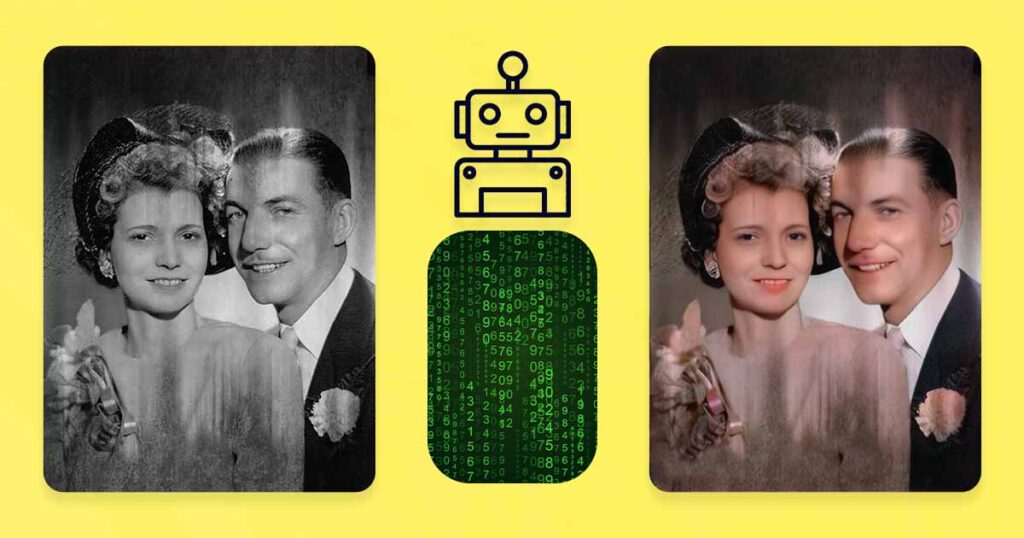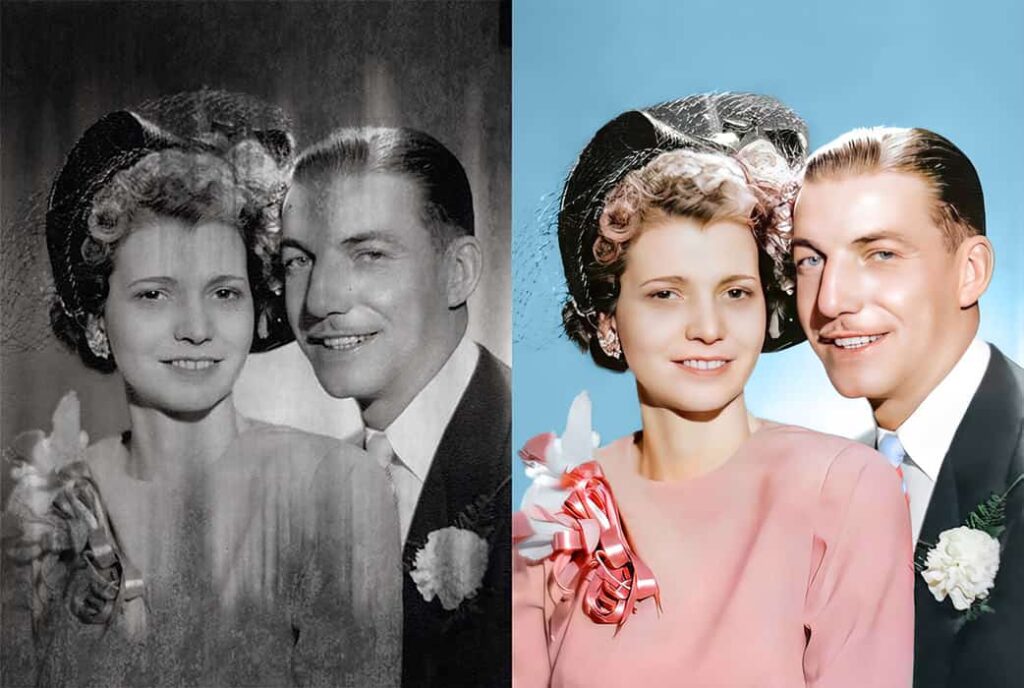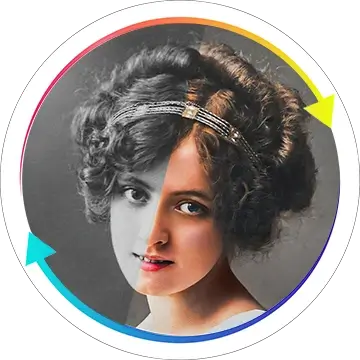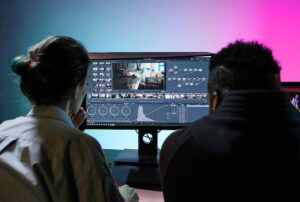Photo Restoration Cost: Pricing Explained
Old photos are priceless, but restoring them often raises one big question: how much does it cost? If you’ve searched online (if anyone still uses Google, not just Chat GPT), you’ve probably seen prices that range from “free” AI tools (often locked by the hidden paywall or watermark) to over $50, $100, $200, and it’s not always clear why.
Update: article is up to date in 2025, with multiple, most popular photo restoration services and the newest AI tools taken into account.
This guide breaks down what affects photo restoration prices, what you should expect to pay, and how to make sure you’re getting the best value.

What Affects the Cost of Photo Restoration?
First, let’s explore the factors that affect the cost of photo restoration services. To be clear, we’re talking about services performed primarily by humans, not AI tools. While AI tools have fixed pricing regardless of the work, their results are often, well, much worse in quality (and especially accuracy), compared to professional human work, as we’ll show later in this article. Now, let’s dive into it.
1. Level of Damage
- Minor – small scratches, light fading, dust spots. Affordable and fast to fix.
- To be honest, sometimes even AI tools do a decent job restoring such photos, so you can give it a try. You can also try to restore it yourself using a free Photoshop alternative – Photopea.com
- Moderate – large cracks, discoloration, torn edges. Requires more detailed work.
- Rarely, but it can be restored by AI, at least partially. Never seen photos of this “class” restored without human touch.
- Severe – missing areas, heavy fading, water, or mold damage. Needs reconstruction and significant work, with high accuracy.
- AI tools can “slap” details into missing areas in these photos, but accuracy will be low, and you will get, sometimes, comedically low-quality results
2. Black & White vs. Color
- Restoring black-and-white photos is usually cheaper and easier, and it brings no extra costs
- Old photo colorization adds complexity because it requires research and artistic accuracy to look natural.
3. Size and Resolution
- Enlarging a small photo to print quality takes more time, especially when the photo is old, and accuracy is a priority
- High-resolution files demand extra detail and precision, and are also often just harder to work with, since they are “huge”, and most PCs struggle to process them
4. Complexity of Requests
- Simple: brighten the image a little, improve faded colors, and remove dust particles
- Complex: rebuild faces, replace missing sections, restore backgrounds, add or remove something/someone
5. Turnaround Time
- Standard delivery is often included (1-4 days)
- Rush orders cost more because they require prioritizing your photo over others.
Typical Price Ranges
While every provider is different, most photo restoration prices fall into these ranges:
- AI-done 1-click tools: free – $15
- Include both the AI tools themselves and some “artists” who put your image into the AI tools without any further manual edits, and sell them to you as “restored.”
- Basic restoration: $15 – $30
- Simple removal of scratches, dust, a few cracks, and creases, brightening the photo
- Moderate restoration: $30 – $50
- Fixing a photo that has noticeable damage here and there, removing imperfections, making the image clearer, sharper, and keeping details natural
- Advanced restoration: $50+
- Major reconstruction of details, fixing faces which are heavily damaged/blurry (reference photos often required to ensure accuracy is decent), and adding missing parts back, while making sure they are accurate
Some studios offer discounts for multiple images or bundles.
AI vs. Human Photo Restoration: What’s the Difference?
With so many free or low-cost AI photo apps available, you might wonder why professional restoration costs more. The difference comes down to accuracy, quality, and trust.
How AI Restoration Works
This is the photo restoration done by AI. Not good, yeah, we know. And yes, even in 2025, it’s still true, no matter how many apps based on Stable Diffusion come every year, GPF GAN, Flux, Flux Kontext, etc, results still look like this.

AI tools use automated filters to guess what a photo “should” look like. They can:
- Sharpen blurry faces
- Add quick color
- Smooth over cracks
But AI often struggles with:
- Facial details – expressions, eyes, and skin can look unnatural or distorted
- Historical accuracy – colors are often guessed, not researched
- Complex damage – missing sections, water stains, or mold can confuse the algorithm
In short, AI is fast, but results can be unrealistic. Here, we showed the difference between human-made photo restoration vs AI tools.
How Human Restoration Works
And, now here you can see the example of the same photo restored by a human artist, with attention and care. AI can be used as a final, polishing step, but if you mind it altogether (we get it), it can be avoided altogether, since 95% of the work is done manually, so not doing/undoing the final 5% layer of enhancements is not a big deal.

A skilled restorer combines technology with artistic judgment. They:
- Rebuild details with care, rather than blur or smooth over them
- Research clothing, skin tones, and historical context for authentic colors
- Work by hand on complex damage to bring back lost parts of the image
- Adjust every detail individually, not with one filter
This human touch ensures the photo still looks natural and true to life.
AI is like applying an automatic Instagram filter. Human restoration is like carefully painting back the memory.
How to Get the Best Value
To make sure you’re paying for quality – not just a quick fix – focus on more than the price tag.
- Check portfolios – Before-and-after examples show real results.
- Look for clear policies – A guarantee or revision policy means less risk.
- Ask about privacy – Family photos should be handled securely.
- Think long-term – A properly restored photo can be shared, printed, and preserved for generations.
We Hope it Helps!
Photo restoration prices vary because every image is unique. Minor fixes may cost little, while severely damaged photos require more time and artistry. Free AI apps can work for quick touch-ups, but when accuracy and emotional value matter, a professional restorer is the safest choice.
At Rememorie, we combine modern tools with skilled artistry to restore photos the right way – whether it’s a lightly faded snapshot or a photo that seems beyond repair. Our pricing is transparent, and every project comes with a satisfaction guarantee.
Want to know what your photo would cost to restore? Get a free quote here.
Get a Free Quote
✔ Professional Photo Restoration
✔ Fast Delivery (1-4 Business days)
✔ Low Price Without Taxes or Fees
✔ Unlimited Free Revisions
✔ Satisfaction Guarantee
LEARN MORESubscribe to Newsletter













How To Store Old Printed Photos and Avoid Damage
Do you have some precious printed photos? Let us explain [...]
Jan
Cracks in Old Photos: How to Save Your Precious Pictures?
Discover expert tips and solutions to restore old photos damaged [...]
Jul
AI vs. Photo Restoration Services Compared: Which is Best for My Old Photos?
Compare photo restoration AI and professional services side-by-side. Uncover the [...]
Jun
Walgreens Photo Restoration Services: Is There Anything Better?
Walgreens is a well-known pharmacy chain that offers old photo restoration services. [...]
Apr
The History of Photo Restoration 2025
Discover the rich history of photo restoration, a practice dating [...]
Dec
20 Stunning Photo Restoration Examples: Before & After Gallery
Discover 20 Stunning Examples of Photo Restoration, showcasing amazing transformations [...]
Sep
How to Protect Your Old Photos From Damage
Do you have some old printed photos that are dear [...]
Jan
What is Photo Colorization and How Does It Work?
You have heard about it multiple times, but still don't [...]
Jan
How to Pick the Best Online Photo Restoration Service?
Are you looking to restore old and damaged photos? We [...]
Jan
Photo Restoration in Preserving Family History and Memories
There's no denying the sentimental value of photographs. They capture [...]
Jan
How to Digitize Photos With Phone at Home? Easy Guide!
Do you have photos and want to make them into [...]
Dec
Types of Damage for Photo Restoration: What Can Be Restored?
Learn everything you need to know about types of damage [...]
Jan